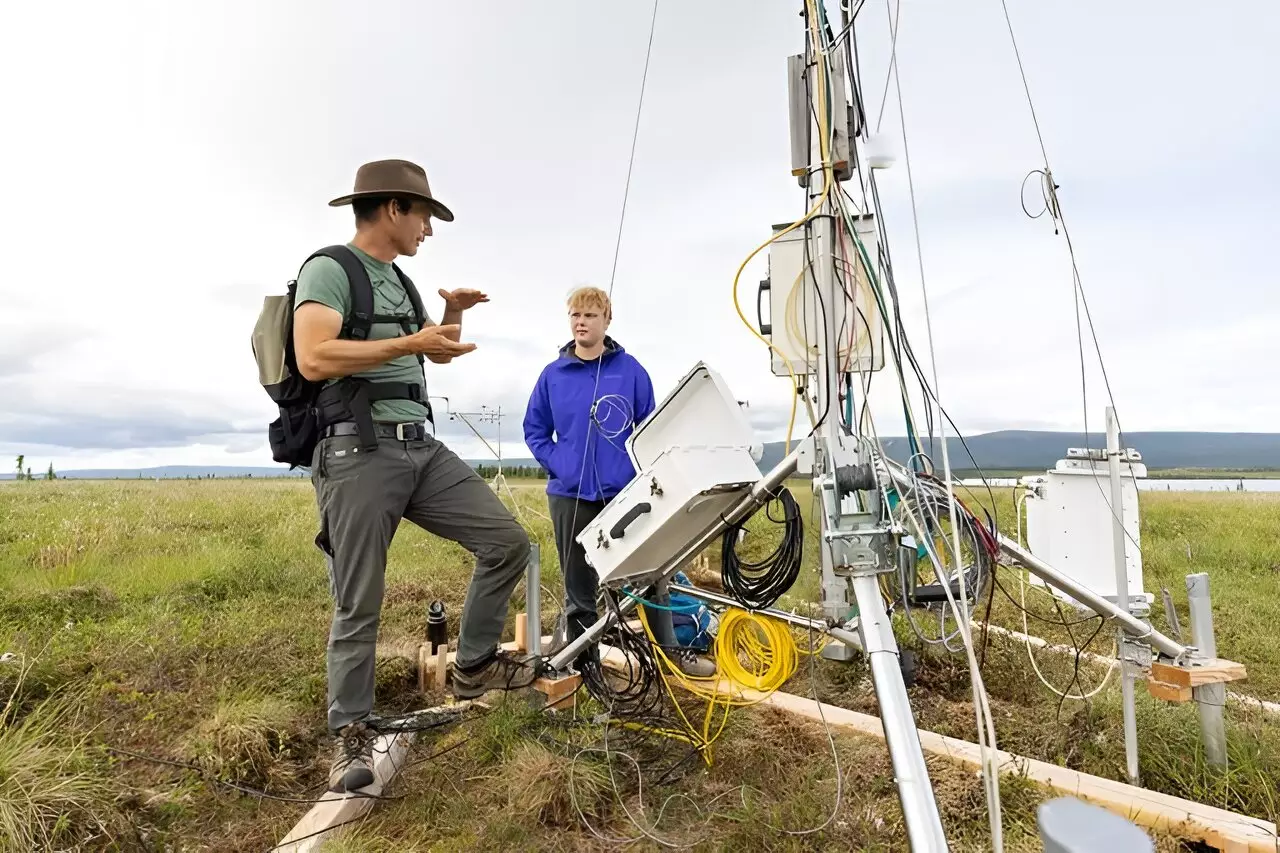The Arctic tundra, despite its frigid reputation, is a powerhouse for carbon storage, holding an astonishing one-third of the world’s soil organic carbon even though it covers only 15% of Earth’s soil area. These ecosystems function as crucial regulators in the global carbon cycle, balancing the uptake of carbon by plants with the carbon released through various biological processes. However, recent studies led by renowned biologist Ted Schuur from Northern Arizona University, alongside the Permafrost Carbon Network, reveal a worrying trend: the warming of permafrost systems is disrupting this balance, thereby accelerating the climate crisis that threatens our planet.
As our planet’s temperature continues to rise, the Arctic tundra is warming three to four times faster than global averages. This rapid change escalates ecosystem respiration rates—essentially how much carbon is released into the atmosphere—putting the region at increased risk of becoming a significant source of carbon emissions. Existing projections suggest that by 2100, the emissions from these Arctic ecosystems could rival those from some of the largest industrialized nations, further complicating global climate strategies.
An Urgent Call for Scientific Inquiry
The urgency of understanding these shifts cannot be overstated. Human-driven changes remain the primary contributors to greenhouse gas emissions; however, the impending threats from thawing permafrost are compounded by insufficient accounting in international agreements, including the Paris Agreement. Researchers are awakening to the fact that current targets may fall short unless they factor in the potential contributions from these critical Arctic systems.
Schuur and his team are at the forefront of a vital scientific inquiry, carefully measuring ecosystem respiration and carbon fluxes across multiple Arctic sites. One study published in *Nature Climate Change* analyzed extensive data from 70 locations, revealing that permafrost ecosystems exhibit increasingly alarming carbon losses in the colder months. As temperatures rise, fall and winter months are seeing greater emissions. This trend significantly alters the narrative surrounding Arctic carbon dynamics, underscoring the need for intensive research and policy adaptation.
Warming Impacts on Carbon Dynamics
A striking finding from Schuur’s research highlights a 30% increase in ecosystem respiration in experimental conditions simulating a warming climate with just a modest temperature rise of 1.4°C. This illustrates a critical point: even slight temperature increases can lead to profound ecological consequences. The research signals an alarming trend—Arctic systems may be releasing more carbon than they sequester, a tipping point that could significantly contribute to global warming.
Furthermore, the variability in local environmental factors such as water and nutrient availability exerts a powerful influence on these carbon cycles, complicating the already intricate web of ecosystem interactions. This localized insight contributes invaluable knowledge regarding how different regions within the tundra may react differently to rising temperatures, providing a more comprehensive understanding of the implications of climate change.
Global Implications and Consequences
The troubling revelations lead into critical discussions about the international policy landscape. Data suggests that emissions from thawing permafrost are not being adequately represented in global emission targets. As we strategize on cutting emissions, incorporating future projections from the Arctic will necessitate more ambitious and perhaps, even radical measures to stay within prescribed temperature limits.
One particularly poignant aspect of this research is how it has been affected by geopolitical events. The current climate of uncertainty, including the ongoing military conflict in Ukraine, has disrupted access to invaluable Arctic research sites, significantly impacting data collection efforts. The loss of this data infrastructure is not just a statistical setback; it obstructs our understanding of a dynamic, changing landscape, resulting in a critical gap in our knowledge.
The Path Forward: Collaborative Efforts
Addressing these challenges requires robust international collaboration and proactive partnerships in Arctic research. Piloting new sites to replace those lost, while providing necessary insights into permafrost dynamics, will be paramount. Enhanced data collection will ensure a more precise understanding of these complex ecosystems—and how the information gleaned can guide global policy responses.
Moreover, as scientific inquiries continue to unfold, it is vital that the global community acknowledges and responds to the escalating threats presented by the permafrost region. In the fight against climate change, understanding the intrinsic relationship between thawing permafrost and carbon emissions will not only inform policy but ultimately shape our survival strategy in an uncertain future.

